Disclosure: We may earn commissions if you purchase products after clicking on a link from our site.
Do you want to know the best camouflage techniques for deer hunting? Do you sometimes feel confused as to which camouflage pattern to wear for deer hunting? Master the art of blending in with the surroundings when deer hunting. Deer struggle with reds and oranges, so stick to blues and greens. Choose the best camo pattern that matches the foliage around you. Consider macro and micro patterns for better concealment.
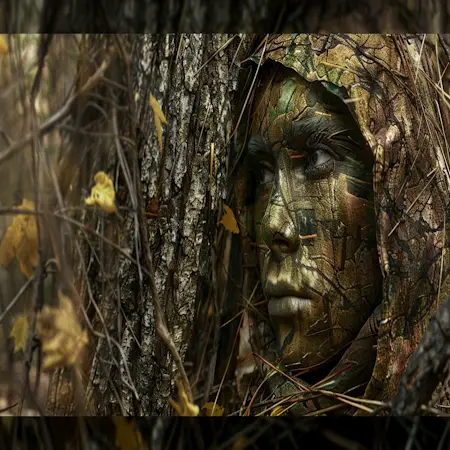
Table of Contents
- 1 Camouflage Techniques for Deer Hunting
- 2 Key Takeaways
- 3 Understanding Deer Vision and Camouflage
- 4 Best All-Season Camouflage Recommendations
- 5 Choosing the Right Camo Pattern
- 6 Factors for Camo Gear Selection
- 7 Testing and Evaluating Camo Patterns
- 8 Additional Tips for Deer Hunting Camo
- 9 Popular Camo Patterns for Success
- 10 Effective Camouflage Techniques
- 11 The Bottom Line
Camouflage Techniques for Deer Hunting
Opt for TrueTimber’s Strata or Kryptek’s Obskura Shift for all seasons. Select Mossy Oak Break-Up Country for wooded areas and Kryptek Highlander for rugged terrains. Prioritize comfort and functionality in camo gear. Blend in with nature, use hunting blinds, and move quietly. Enhance your hunting success by mastering effective camouflage techniques. More tips await to boost your hunting game.
Key Takeaways
- Utilize natural cover for enhanced concealment.
- Limit movement to avoid detection by deer.
- Apply camo face paint strategically for better blending.
- Choose different patterns for topcoats and bottoms.
- Incorporate native vegetation to blend seamlessly with the surroundings.

Understanding Deer Vision and Camouflage
To effectively conceal yourself while deer hunting, understanding how deer perceive colors and movement is essential in selecting appropriate camouflage. Deer have dichromatic vision, meaning they see colors on a spectrum of blue and green but struggle with reds and oranges.
This knowledge guides your camo choice, avoiding bright colors that stand out and opting for patterns that blend seamlessly with the surrounding foliage. Incorporating macro and micro patterns in your camo helps break up your outline, making you less detectable to deer. The perfect camouflage takes into consideration the color combinations for the environment that you will be hunting in.
When selecting your camo, consider the environment and the season you’ll be hunting in. Browns and grays work well for late-season hunts, while greens are ideal for early-season camouflage. A successful camo pattern should mimic the natural colors and textures of the hunting area while avoiding blues and UV brightness. By aligning your camo choice with deer vision limitations and seasonal changes, you increase your chances of a successful hunt.
Deer Vision Basics
Understanding how deer see the world is essential for choosing effective camouflage patterns in deer hunting. Deer have dichromatic vision, meaning they see colors in shades of blue and green, lacking red cones.
They’re sensitive to short-wavelength light, making them adept at detecting movement. Deer easily spot blues and UV light, so avoid these colors in your camo. Instead, opt for browns and greens to blend seamlessly with the surroundings.
When selecting camouflage patterns, consider mimicking the natural environment to deceive deer vision. By understanding deer vision basics, you can tailor your camo choices to match their perception, increasing your chances of a successful hunt.
Effective Camo Patterns
To effectively deceive deer vision and increase your hunting success, choosing camo patterns that mimic the natural environment is key. When selecting camo patterns, consider the following:
- Blend with Surroundings: Opt for camo patterns that match the terrain and foliage to seamlessly blend in.
- Consider Deer Vision: Take into account how deer perceive colors and movement to choose effective camo.
- Use Macro and Micro Patterns: Incorporate both macro and micro patterns for enhanced concealment in different environments.
Color and Contrast
Deer perceive colors and movement differently, influencing the choice of camouflage patterns for effective hunting concealment. To blend in seamlessly, consider camo patterns that match the environment’s foliage changes and avoid colors that stand out to deer. Opt for patterns that cater to deer vision limitations, such as mimicry and disruption designs. Effective macro and micro patterns enhance concealment and hunting success.
Browns and grays work well for late-season hunts, while greens are ideal for early-season outings. Remember to steer clear of blues and UV brightness, as deer can detect these colors. Pattern disruption is key to breaking up the human outline for successful hunting. Customize your camo color choice based on the hunting environment and season for the best results.
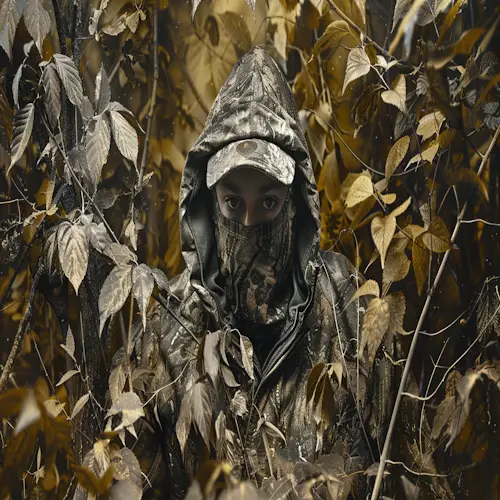
Best All-Season Camouflage Recommendations
For ideal concealment and versatility across various habitats and seasons, consider versatile all-season camouflage patterns. Opt for TrueTimber’s Strata, Huntworth’s Disruption, Kuiu Verde, Kryptek’s Obskura Transitional, or Sitka’s Camo for a well-rounded choice.
These options are adaptable to different environments like Eastern Hardwoods, Southeast, Midwest, Western Mountains, Open Country, and snowy regions. If you’re specifically into treestand hunting, Asio Gears Raptor, First Lite’s Specter, SITKA Gears OPTIFADE Elevated II, and Krypteks Obskura Skyfall are tailored for such scenarios.
When selecting camo, match it to the specific regional characteristics of the area you’ll be hunting in, such as the Eastern U.S., Southeast, Midwest, or Western Mountains. Camo variations like First Lite’s Specter, Asio Gears Raptor, TrueTimber’s Strata, and Forlohs Deep Cover cater to these regional requirements, ensuring effective concealment.
Top Camo Patterns
For versatile and effective all-season camouflage, consider utilizing TrueTimber’s Strata, Huntworth’s Disruption, Kuiu Verde, Kryptek’s Obskura Transitional, and Sitka’s camo patterns.
- TrueTimber’s Strata
- Huntworth’s Disruption
- Kuiu Verde
These camo patterns offer a range of colors and designs to blend seamlessly with various habitats and seasons. TrueTimber’s Strata provides flexibility, while Huntworth’s Disruption offers effective concealment. Kuiu Verde is ideal for blending in with different types of foliage.
Kryptek’s Obskura Transitional and Sitka’s camo patterns are also excellent choices for hunters seeking top-notch camouflage in diverse hunting environments. These patterns cater to different terrains and conditions, enhancing your chances of a successful deer hunting experience.
Layering for Seasons
To guarantee excellent camouflage efficiency throughout all seasons, consider layering with versatile camo patterns such as TrueTimber’s Strata, Huntworth’s Disruption, Kuiu Verde, Kryptek’s Obskura Transitional, and Sitka’s camo. These adaptable camo options provide ideal blending in various habitats and seasons.
For Eastern Hardwoods, Southeast, Midwest, Western Mountains, Open Country, and snowy regions, these camo patterns ensure seamless integration with the environment. Additionally, specialized camo like Asio Gears Raptor, First Lite’s Specter, SITKA Gears OPTIFADE Elevated II, and Krypteks Obskura Skyfall cater to treestand hunting scenarios.
Camo Accessories Guide
Consider versatile camo accessories like hats, gloves, and face masks for the best camouflage in all seasons. When selecting camo accessories, opt for items that offer both functionality and concealment. Here are some top recommendations for all-season camo gear:
- Hats: Choose hats that match your camo pattern for head-to-toe blending.
- Gloves: Select gloves that provide dexterity while keeping your hands concealed.
- Face Masks: Invest in face masks that match your surroundings and help break up your facial features for better camouflage.
These accessories not only enhance your overall camouflage but also offer comfort and practicality during your hunting adventures.

Choosing the Right Camo Pattern
Consider the variety of camo patterns available to guarantee peak concealment and hunting success during your deer hunting expeditions. When choosing the right camo pattern, it’s important to factor in the terrain and season you’ll be hunting in.
Opt for patterns that blend seamlessly with the surroundings to avoid detection by deer. For wooded areas, patterns like Mossy Oak Break-Up Country or Realtree Edge work well, while Kryptek Highlander is ideal for more rugged terrains. If you’re hunting in snowy regions, a pattern like Sitka Gear Elevated II can provide better concealment.
Remember to match the color and pattern of your camo to the specific hunting environment to enhance effectiveness. By selecting the right camo pattern that suits the terrain and season, you can greatly improve your chances of a successful deer hunting experience.
Pattern Color Selection
For the best camouflage effectiveness in deer hunting, focus on selecting a camo pattern that seamlessly blends with the natural colors of the hunting environment. When choosing the right camo pattern, consider the following: The right camouflage pattern will increase your chances of a successful hunt.
- Opt for colors that match the predominant hues in your hunting area.
- Select patterns that mimic the textures and shapes of the surroundings.
- Avoid bright colors or patterns that stand out and catch the deer’s attention.
Environment Adaptation
To effectively blend into your hunting environment and increase your chances of success, choose a camo pattern that seamlessly matches the natural colors and textures of the surroundings. Consider the terrain you’ll be hunting in – whether it’s dense woods, open fields, or snowy landscapes.
Opt for camo patterns like TrueTimber’s Strata or Kryptek’s Obskura Shift that offer flexibility across different habitats and seasons. Tailor your camo choice to the specific regional environment you’ll be hunting in, such as Eastern Hardwoods, Western Mountains, or snowy regions, for best concealment.
Remember to select camo colors that suit the hunting season – browns and grays for late-season hunts, and greens for early-season hunts. By adapting your camo pattern to the environment, you’ll enhance your camouflage effectiveness and increase your hunting success.
Movement Disruption Techniques
Using effective movement disruption techniques is crucial when selecting the right camo pattern for deer hunting. To guarantee top camouflage efficiency, consider the following:
- Varying Patterns: Choose camo patterns with diverse shapes and sizes to disrupt the outline of your body.
- Contrasting Colors: Opt for camo patterns that incorporate a mix of light and dark shades to break up your silhouette.
- Natural Textures: Select camo patterns that mimic the textures and patterns found in the hunting environment for seamless blending.
These techniques help you blend into your surroundings effectively, increasing your chances of remaining undetected by deer during hunting expeditions.
Layering for Effectiveness
When choosing the appropriate camo pattern for deer hunting, make sure your selection includes different patterns, contrasting colors, and natural textures to effectively blend into your surroundings. Opt for camo patterns that match the terrain and season you’ll be hunting in.
For wooded areas, choose patterns with vertical stripes, while rougher terrain may require blotches for better concealment. Consider popular camo patterns like Mossy Oak Break-Up Country or Realtree Edge for versatile blending.
Browns and grays work well for late-season hunts, while greens are ideal for early-season camouflage. Remember to avoid blues and UV-bright colors to prevent detection. By selecting the right camo pattern that aligns with your hunting environment and season, you enhance your chances of a successful deer hunt.

Factors for Camo Gear Selection
When choosing camo gear for deer hunting, prioritize comfort, functionality, and ideal concealment to enhance your hunting experience. Consider the hunting environment, predominant colors, and the specific season you’ll be hunting in.
Choose camo patterns that align with the terrain and provide versatility across different settings. Make sure your gear offers top-notch concealment and blends seamlessly with the surroundings to avoid detection. Choose camo gear that suits your personal preferences and hunting needs, whether it’s lightweight clothing for warmer seasons or insulated options for colder climates.
Look for durable materials that can withstand rugged terrains and various weather conditions. By selecting camo gear that prioritizes your comfort, functionality, and concealment, you’ll be better equipped for a successful hunting expedition.
Camo Pattern Effectiveness
To effectively choose camo gear for deer hunting, consider the terrain, predominant colors, and specific hunting seasons. When assessing camo patterns, keep in mind the following factors:
- Match camo patterns to the natural colors of the hunting environment
- Choose camo colors that blend seamlessly with the predominant foliage
- Opt for camo patterns that are useful for the specific hunting season
Selecting the right camo pattern can greatly enhance your ability to remain concealed and increase your hunting success. By aligning your camo gear with the surroundings and seasons, you create an advantage that helps you blend in seamlessly and avoid detection by deer.
Material Breathability and Comfort
Consider the breathability and comfort of materials when selecting camo gear for hunting, ensuring peak performance in varying environments. Opt for lightweight and breathable fabrics to prevent overheating and discomfort during long hunting expeditions. Fabrics like polyester blends and moisture-wicking materials help regulate body temperature and keep you dry.
Look for camo gear with adjustable features like cuffs, hoods, and waistbands for a customized fit that enhances comfort. Prioritize soft and silent materials that won’t rustle or make noise as you move. Ensuring your camo gear is comfortable and breathable allows you to focus on the hunt without distractions, increasing your chances of a successful deer hunting experience.
Weather Adaptability and Durability
For peak performance in varying weather conditions and prolonged use, prioritize camo gear that offers superior weather adaptability and durability.
- Look for water-resistant or waterproof materials to keep you dry in rainy conditions.
- Choose camo gear with reinforced seams and durable fabric for long-lasting use.
- Opt for breathable materials to prevent overheating and guarantee comfort during extended hunting trips.
Mobility and Flexibility
Make sure your camo gear allows for easy movement and flexibility while hunting, ensuring you can adapt swiftly to your surroundings. Opt for lightweight materials that won’t restrict your movements, especially when stalking or changing positions. Look for camo gear with stretchable fabrics that provide freedom of movement without making noise.
Adjustable features like cuffs, waistbands, and hoods can help customize the fit for better mobility. Consider gear with strategic reinforcements in high-movement areas for durability without sacrificing flexibility. Prioritize camo gear that allows you to crouch, crawl, and climb effortlessly, enhancing your overall hunting experience.
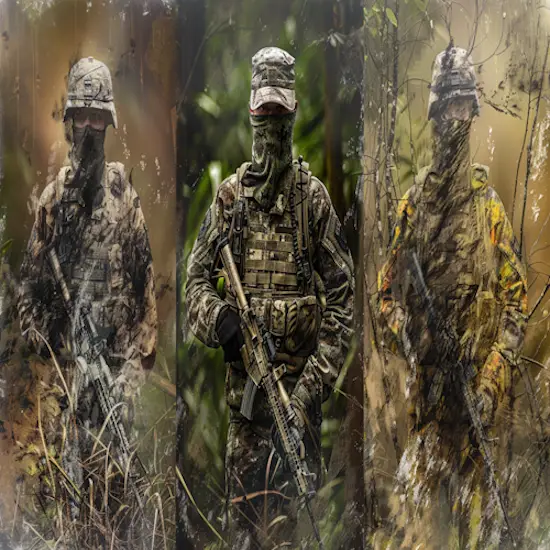
Testing and Evaluating Camo Patterns
To effectively assess the efficacy of camo patterns, begin by testing them in real hunting environments. Evaluate how well the camo blends with the terrain, conceals your movement and silhouette, and adapts to different lighting conditions.
Check for visibility under various scenarios to guarantee the best concealment. Consider your hunting style and strategy when testing camo patterns to find the best fit for your needs. Assess the camo’s performance across different seasons to guarantee versatility and adaptability.
When testing camo patterns, focus on their ability to provide maximum concealment and enhance your hunting success. Look for patterns that match the natural surroundings and help you blend in seamlessly. Evaluate how well the camo gear aligns with your personal preferences and hunting techniques. By testing and evaluating camo patterns thoroughly, you can choose the most effective camouflage for your deer hunting expeditions.
Pattern Effectiveness Assessment
Assess camo pattern effectiveness by testing them in real hunting environments to determine their suitability and performance. To evaluate camo patterns effectively, consider the following:
- Visibility: Test how well the camo blends with the natural surroundings and if it conceals you from sight.
- Movement Concealment: Assess if the pattern hides your movements and silhouette effectively.
- Seasonal Adaptability: Determine if the camo pattern works across different seasons for versatile use.
Field Testing Results
Field testing results reveal the practical effectiveness of various camo patterns in real hunting environments. When testing camo patterns, focus on visibility, blending ability, and concealment of movement and silhouette.
Assess how well the camo gear aligns with your hunting style and strategy. Evaluate patterns across different seasons for versatility and adaptability. Choose camo patterns that offer maximum concealment to enhance your hunting success.
Field testing provides valuable insights into the real-world performance of camo patterns, helping you make informed decisions about your camouflage gear. By observing how different patterns work in natural settings, you can tailor your camo selection to suit the specific challenges of your hunting environment.
Camo Pattern Comparison
To compare and evaluate camo patterns effectively, observe how different patterns perform in natural settings to tailor your camo selection for the best hunting success.
When testing camo patterns, consider the following:
- Assess visibility and blending ability in the field.
- Evaluate concealment of movement and silhouette.
- Choose camo patterns that match the hunting environment and season for peak effectiveness.
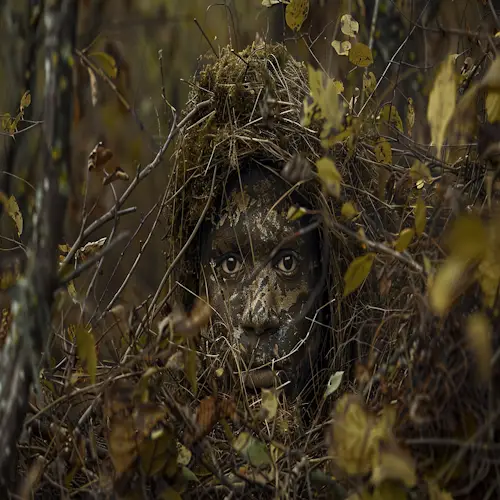
Additional Tips for Deer Hunting Camo
For improved concealment during deer hunting, incorporate natural cover and utilize hunting blinds for enhanced stealth. Utilizing the natural environment to blend in effectively can greatly increase your chances of remaining undetected by deer. When setting up your hunting spot, make use of bushes, trees, or any available vegetation to break up your outline and blend into the surroundings seamlessly.
Additionally, hunting blinds offer a strategic advantage by providing cover and reducing movement visibility. Opt for blinds that match the surrounding terrain for best camouflage.
To further enhance your camouflage, opt for clothing and gear made from silent materials to minimize noise that could startle deer. Practice stillness and avoid sudden movements to prevent detection. Incorporating scent control techniques, such as using scent-neutralizing sprays or hunting downwind, can also help in staying hidden from the keen sense of smell of deer.
Camo Pattern Selection
For efficient deer hunting camo, make sure your camo pattern selection aligns with the specific terrain and season you’ll be hunting in. When choosing your camo pattern, consider the following:
- Opt for camo patterns that blend with the hunting environment and foliage changes.
- Select versatile camo options like TrueTimber’s Strata or Kryptek’s Obskura Transitional for various habitats and seasons.
- Tailor your camo choice to match the specific regional environments such as Eastern Hardwoods, Midwest, or snowy regions.
Proper Face Painting
Select the most suitable camo face paint to enhance your deer hunting camouflage effectiveness. Camo face paint diminishes glare on your skin, aiding in better concealment. When applying camo face paint, opt for matte, glare-free options.
You can find camo face paint in individual color tubes or convenient three packs for versatility. Guarantee complete coverage by using an acrylic mirror to check your application in the field.
To further enhance your camouflage, consider adding bits of native vegetation to both your clothing and the paint itself. By incorporating natural elements into your camo face paint, you can effectively blend into your surroundings and increase your chances of a successful deer hunting experience.
Blending With Surroundings
To seamlessly blend into your hunting environment and increase your chances of success, incorporate natural elements into your camo gear for the best concealment. Here are some additional tips for deer hunting camo:
- Utilize local vegetation and foliage for natural blending.
- Choose camo patterns that match the colors of the surrounding environment.
- Incorporate earthy tones and textures into your camo gear for better camouflage effectiveness.
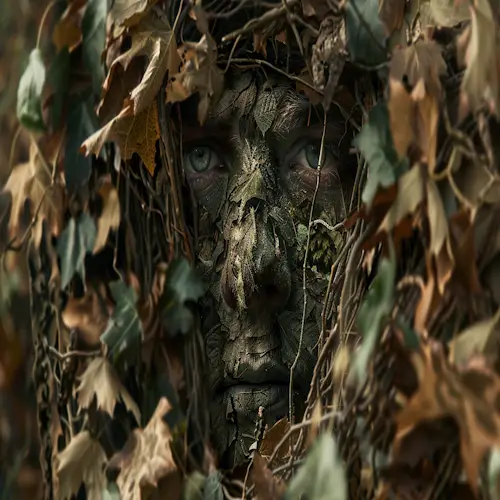
Popular Camo Patterns for Success
Explore the effectiveness of popular camo patterns in enhancing your hunting success. When choosing camo patterns, consider the versatility they offer across different terrains and seasons.
Some popular camo patterns that have proven successful include:
- Mossy Oak Break-Up Country
- Realtree Edge
- Kryptek Highlander
- Sitka Gear Elevated II
These patterns are known for their ability to blend seamlessly with various environments, providing peak concealment and increasing your chances of a successful hunt.
Top Camo Patterns
For successful deer hunting, understanding the popularity of different types of camo patterns can greatly enhance your camouflage strategy.
- Mossy Oak Break-Up Country: Offers a versatile pattern for blending in various terrains.
- Realtree Edge: Known for its effectiveness in providing natural concealment in wooded areas.
- Kryptek Highlander: Ideal for mountainous regions and rocky terrains.
Selecting the right camo pattern can make a significant difference in your hunting success. By choosing patterns like Mossy Oak Break-Up Country, Realtree Edge, or Kryptek Highlander, you can improve your camouflage effectiveness and increase your chances of a successful deer hunt.
Blend With Environment
Blend naturally with your environment using popular camo patterns to increase your hunting success. Camo patterns like Mossy Oak Break-Up Country, Realtree Edge, Kryptek Highlander, and Sitka Gear Elevated II are effective choices.
These patterns mimic natural surroundings, helping you blend seamlessly into different terrains. Mossy Oak Break-Up Country is great for wooded areas, while Realtree Edge suits various environments. Kryptek Highlander offers versatility across seasons, and Sitka Gear Elevated II excels in elevated positions.
Camo Color Choices
To accomplish prosperous deer hunting, opt for camo designs like Mossy Oak Break-Up Country, Realtree Edge, Kryptek Highlander, or Sitka Gear Elevated II that blend seamlessly with your hunting environment.
- Mossy Oak Break-Up Country: Ideal for wooded areas with its natural colors and lifelike bark and leaf patterns.
- Realtree Edge: Perfect for merging in open landscapes and changing settings with its mix of shadows and highlights.
- Kryptek Highlander: Tailored for mountainous regions, providing effective concealment with its intricate micro patterns.
Choosing the appropriate camo design that complements your hunting surroundings will greatly enhance your chances of remaining hidden and achieving a triumphant deer hunt.
Camo Gear Selection
When selecting camo gear for deer hunting success, prioritize camo patterns that align with your hunting environment and seasonal requirements. Opt for popular patterns like Mossy Oak Break-Up Country, Realtree Edge, Kryptek Highlander, or Sitka Gear Elevated II for effective concealment. These patterns enhance your chances by blending seamlessly with your surroundings.
Consider TrueTimber’s Strata, Huntworth’s Disruption, or Kuiu Verde for versatile options suitable for various habitats and seasons. Tailor your camo gear to match regional environments like Eastern Hardwoods, Southeast, Midwest, or Western Mountains. Choose camo colors wisely; browns and grays work well for late-season hunts, while greens are ideal for early-season expeditions.
Make sure your camo gear selection complements your hunting strategy for maximum effectiveness in the field.
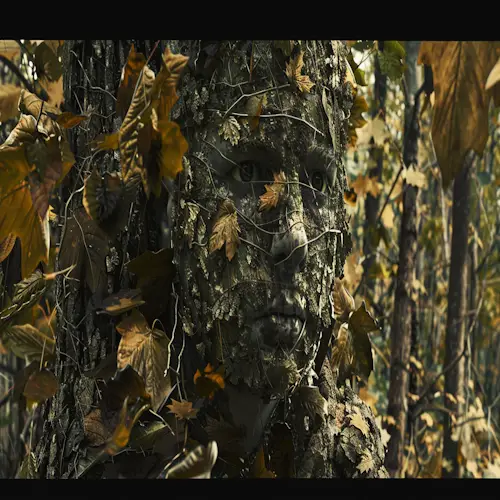
Effective Camouflage Techniques
Discover key strategies for effectively implementing camouflage techniques in your deer hunting endeavors. To enhance your concealment, utilize natural structures and vegetation to blend seamlessly into your surroundings. Limit your movement and adopt smart patterns to avoid detection.
When applying camo face paint, use asymmetrical blotches or shapes in dark colors to darken highlighted areas and light colors to lighten recessed spots. Make sure the colors are darkest in the furthest-protruding regions and blend the edges to soften your appearance.
Choose different patterns for your topcoat based on the environment you’re hunting in, mimicking the natural colors of the surroundings. Incorporate bits of native vegetation into your clothing and paint for better blending.
For best camouflage effectiveness, keep your paint asymmetrical, use vertical stripes for wooded areas, and rough blotches for dense undergrowth. By mastering these camouflage techniques, you can increase your chances of a successful deer hunting experience.
Color Selection Tips
For effective camouflage techniques, selecting appropriate colors plays an essential role in blending seamlessly with your hunting environment. When choosing colors for your camo gear, consider the following tips:
- Match to Surroundings: Opt for colors that mimic the natural hues of your hunting environment.
- Seasonal Adaptation: Select colors based on the season to blend effectively with changing foliage.
- Avoid Bright Tones: Steer clear of colors that stand out to deer, and minimize blue and UV visibility.
Break up Silhouette
To effectively camouflage yourself in your hunting environment, it’s important to break up your silhouette using strategic techniques. By breaking up your outline, you make it harder for deer to spot you.
One effective method is to use natural cover like bushes or trees to disrupt your shape. Position yourself against dense foliage or background objects to blend in seamlessly. Avoid standing out against the backdrop by incorporating shadows and highlights to your advantage.
Use Natural Patterns
Blend natural patterns into your camouflage for ideal concealment in hunting environments. To effectively utilize natural patterns in your camouflage, consider the following:
- Incorporate local vegetation into your camo for seamless blending.
- Choose camo patterns that match the specific regional environment.
- Opt for colors and patterns that mimic the natural surroundings.
Mind Movement Control
Incorporating mindful control of your movements is key to mastering effective camouflage techniques. To blend seamlessly into your hunting environment, move slowly and deliberately, avoiding sudden gestures or jerky motions that could give away your position.
When changing between positions, do so gradually and smoothly, mimicking the natural flow of the surroundings. By being aware of your body’s movements and adjusting them to match the pace of nature, you increase your chances of going undetected by deer.

The Bottom Line
Camouflage for deer hunting is very important for a successful hunt. Additionally, it is also important for your safety and that of other hunters who are in your group or maybe in the area. In this article, we share information to help you understand the different camouflage patterns and make an informed decision when choosing one.
Mastering the art of camouflage for deer hunting is very important for hunting. The importance of camouflage can not be taken lightly when game animals. The best chance of succeeding on your next hunt is to get the hunting camo patterns correct. Big game hunters keep refining their skills and experimenting with different camo patterns to stay one step ahead of their prey. Remember, blending seamlessly into your environment is the key to success for deer hunters. Additionally, always wear blaze orange for safety and take into consideration the wind direction.
If you would like to learn how to hunt whitetail deer during the rut, then you can read this article. Similarly, you can also read about the best deer attractants or the best deer feeders if you are interested in deer attractants or deer feeders. The conservation efforts in deer hunting discuss deer management and conservation.